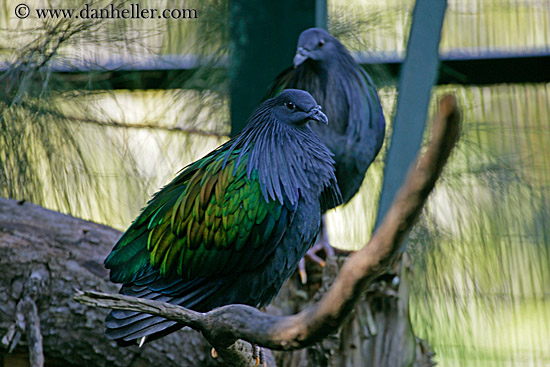Pigeon Breed Facts
1. Victoria crowned pigeon
 The Victoria Crowned Pigeon, Goura victoria, is a large, bluish-grey pigeon with elegant blue lace-like crests, maroon breast and red iris The bird may be easily recognized by the unique white tips on its crests. Both sexes are similar. It is on average 74 cm (29 in) long and weighs 2,384 grams (5.3 lbs). It is marginally larger than the other crowned pigeons on average and likely the largest species of pigeon of earth.
The Victoria Crowned Pigeon, Goura victoria, is a large, bluish-grey pigeon with elegant blue lace-like crests, maroon breast and red iris The bird may be easily recognized by the unique white tips on its crests. Both sexes are similar. It is on average 74 cm (29 in) long and weighs 2,384 grams (5.3 lbs). It is marginally larger than the other crowned pigeons on average and likely the largest species of pigeon of earth.2.Rock Pigeon
 The Rock Dove (Columba livia), formerly Rock Pigeon, is a member of the bird family Columbidae (doves and pigeons). In common usage, this bird is often simply referred to as the "pigeon". The species includes the domestic pigeon, and escaped domestic pigeons have given rise to feral populations around the world.Wild Rock Doves are pale grey with two black bars on each wing, although domestic and feral pigeons are very variable in color and pattern. There are few visible differences between males and females. The species is generally monogamous, with two squeakers (young) per brood Both parents care for the young for a time.The Rock Dove has a restricted natural resident range in western and southern Europe,North Africa and into South Asia The Rock Dove is often found in pairs in the breeding season but is usually gregarious.
The Rock Dove (Columba livia), formerly Rock Pigeon, is a member of the bird family Columbidae (doves and pigeons). In common usage, this bird is often simply referred to as the "pigeon". The species includes the domestic pigeon, and escaped domestic pigeons have given rise to feral populations around the world.Wild Rock Doves are pale grey with two black bars on each wing, although domestic and feral pigeons are very variable in color and pattern. There are few visible differences between males and females. The species is generally monogamous, with two squeakers (young) per brood Both parents care for the young for a time.The Rock Dove has a restricted natural resident range in western and southern Europe,North Africa and into South Asia The Rock Dove is often found in pairs in the breeding season but is usually gregarious.3.The Pied Imperial-pigeon, Ducula bicolor, is a relatively large, pied species of pigeon. It is found in forest, woodland, mangrove, plantations and scrub in Southeast Asia, ranging from Myanmar and Thailand south to Java and east to the Philippines and the Bird's Head Peninsula in New Guinea. It is mainly found on small islands and in coastal regions It remains locally common, and is therefore considered to be of least concern by bird life international.
4. Nicobar Pigeon
The Nicobar Pigeon, Caloenas nicobarica, is a pigeon found on small islands and in coastal regions from the Nicobar islands, east through the Malay Archipelago, to the Solomons and Palau. It is the only living member of the genus Caloenas.Females are slightly smaller than males; they have a smaller bill knob, shorter hackles and browner underparts. Immature birds have a black tail and lack almost all iridescence. There is hardly any variation across the birds' wide range. Even the Palau subspecies C. n. pelewensis has merely shorter neck hackles, but is otherwise almost identical.it is giving a low pitched call.
This is a picture of a fantail pig




No comments:
Post a Comment